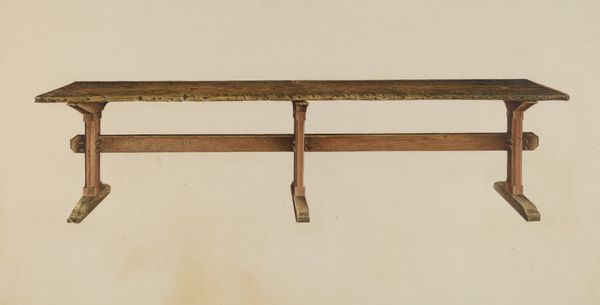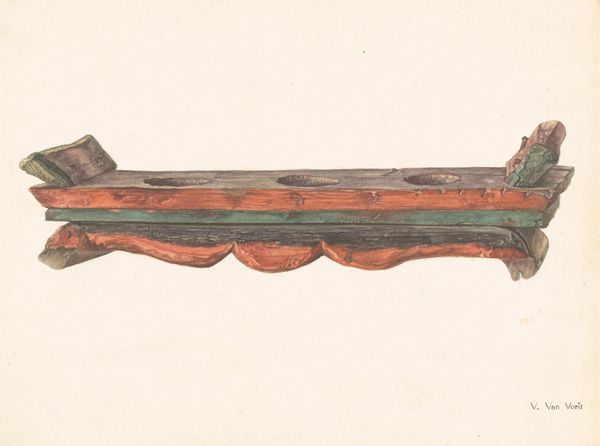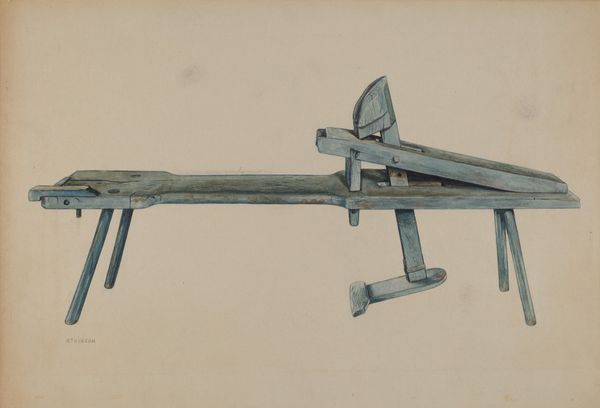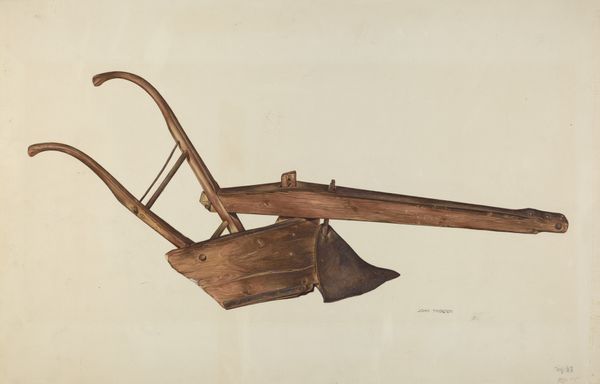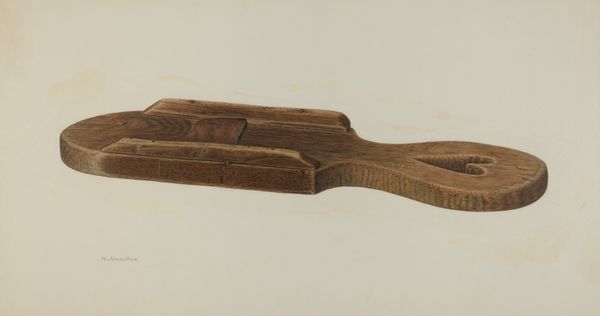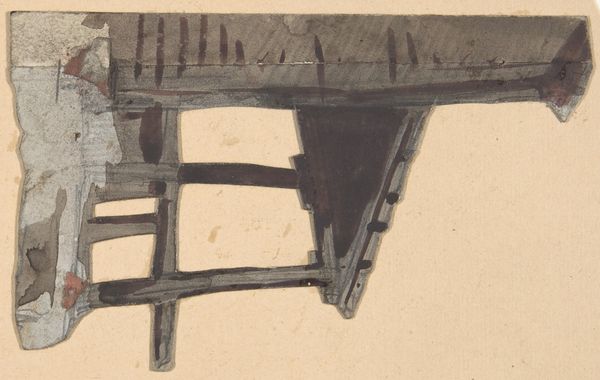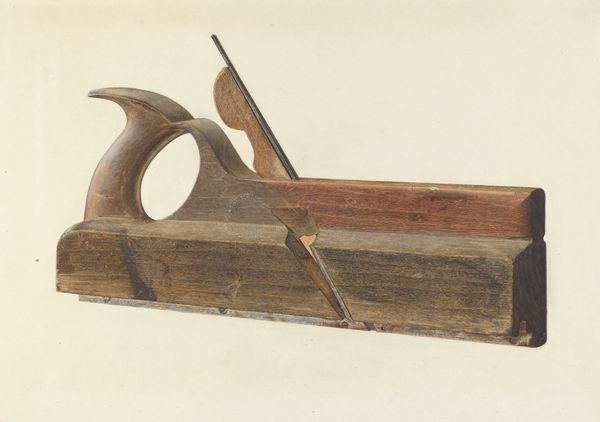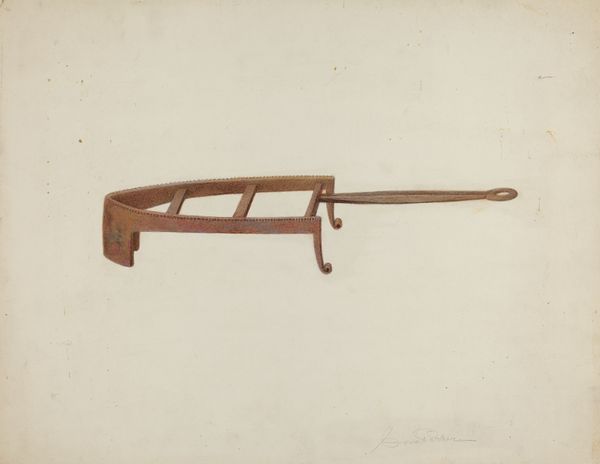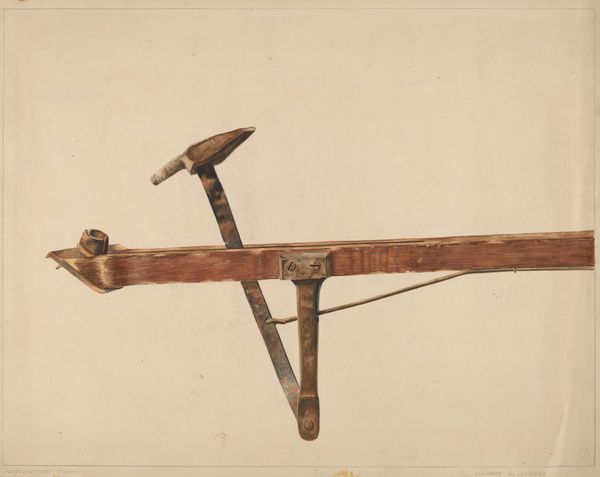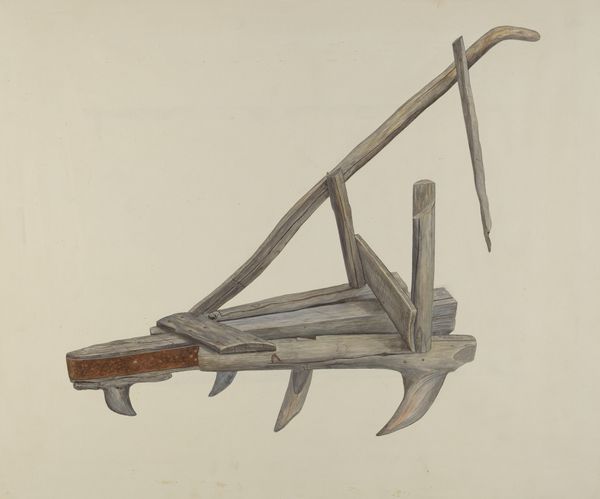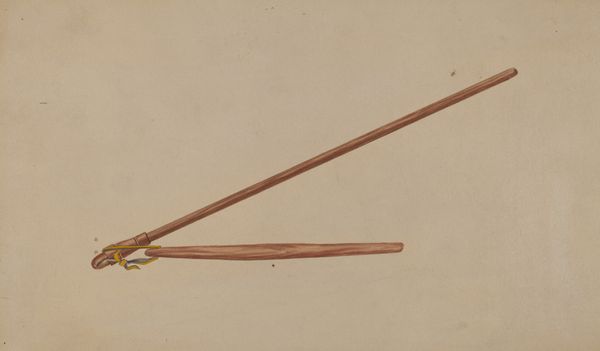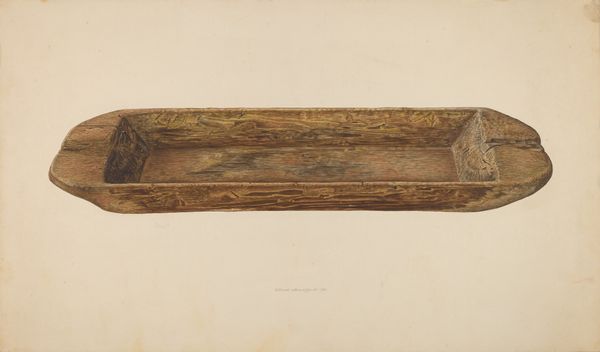
drawing, watercolor
#
drawing
#
water colours
#
watercolor
#
watercolor
#
realism
Dimensions: overall: 34.3 x 55.5 cm (13 1/2 x 21 7/8 in.) Original IAD Object: Tray: 1'18". Bench: 20 1/2"
Copyright: National Gallery of Art: CC0 1.0
Curator: The utilitarian nature of this piece is what stands out initially; the bench is composed simply, its wood a uniform pallid shade. Editor: Indeed. Let's contextualize this. What we're looking at is a watercolor drawing entitled *Shoe Bench*, crafted around 1941 by Clarence W. Dawson. Curator: I see. In terms of its form, there is such straightforwardness—a rectangle abutting an oval shape, propped up by elementary legs. It's about as basic as an object can get. The nails are openly apparent, declaring the way that things are. It even makes a mark in art history by echoing utilitarian styles rooted in the industrial era! Editor: Precisely! What resonates with me is how this ordinary, perhaps even mass-produced object becomes a subject worthy of artistic consideration. Think about the cultural narrative embedded here: The accessibility of owning durable goods changed how people perceived design in their everyday lives. In 1940s America, this democratization would mean considering "low" materials with earnest curiosity, an appreciation, maybe, for honest labor and unadorned purpose. Curator: I am more intrigued by how the watercolor medium softens what could have been an entirely sterile construction. Notice the gradations of the hues that imbue this bench with almost organic feel. The subdued color palette of ochres and muted greens hints to weathering. One might assume the artwork captures time's gentle weathering. Editor: Well put. The bench may be straightforward in its utility, as you mentioned before, but the social context infuses this image with meaning, doesn't it? Here we get something like working class appreciation portrayed through everyday experience during wartime and after; at least that's how the American aesthetic might consider this image when originally distributed across the United States by government agents as propaganda material celebrating hard working peoples across this country during its ascent toward world leadership status. Curator: Fascinating—so a subtle, even humble form when divorced from that story—until reconnected and revealed. I now also wonder whether its formal rigor speaks more about functionality than, perhaps, first thought. Editor: Right. I will certainly carry away this painting in a newly contemplative state about working class representation as influenced throughout time during this work of art—a cultural piece worthy of attention in retrospect through Dawson's lens.
Comments
No comments
Be the first to comment and join the conversation on the ultimate creative platform.
